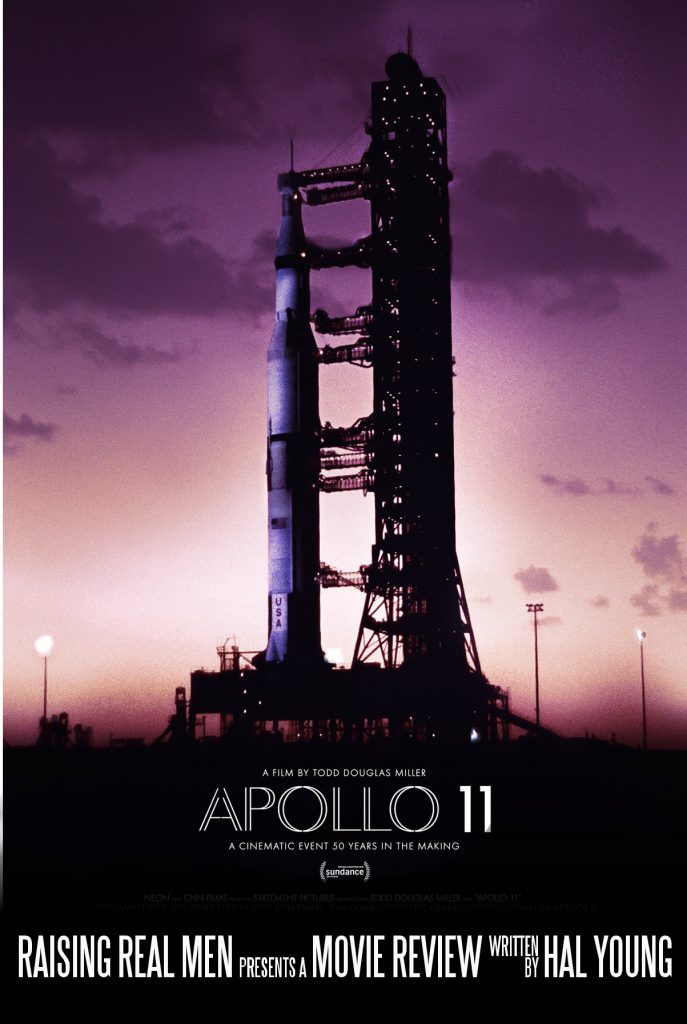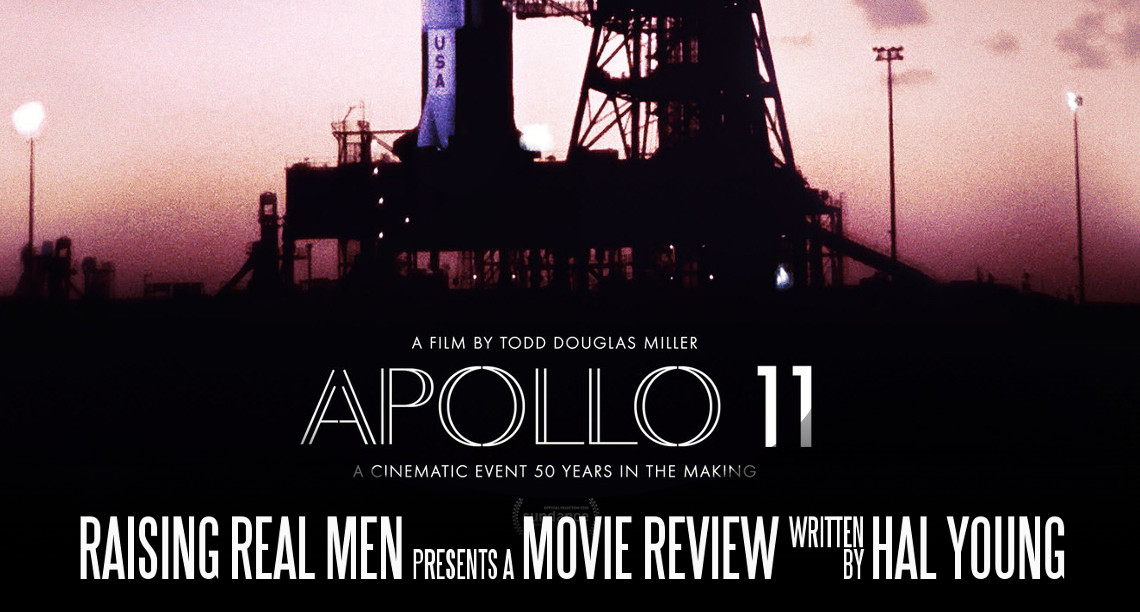Movie Review: Apollo 11
I’m a fan of historical films (see my reviews of They Shall Not Grow Old and Darkest Hour). I had read some sharp criticism of last year’s dramatization First Man and didn’t see it, but Melanie and I had a recent “date afternoon” and watched the purely documentary Apollo 11 at a local IMAX theater.
This one gets two thumbs up.
This is a compilation of film and video, much of it from the NASA archives and never broadcast before. The opening sequences show the transfer of the Saturn V from the Vehicle Assembly Building to the launch pad, interspersed with still photos of the astronauts as younger men – graduation photos, wedding pictures, family snapshots. These, with the close ups of the three astronauts as they suit up for the mission, really bring home the enormity and the danger of what they were about to do.
As the mission unfolds, the film switches between the capsule, exterior cameras on the spacecraft, and Mission Control. There is palpable tension and then relief on the ground as critical milestones are reached and achieved. Even when you know the successful outcome, the director and editor build the drama and uncertainty (Will they survive? you think) and keep the audience on edge.
Most of the audio is contemporaneous recordings of radio and video – there is almost zero narration, apart from a few short clips from two of the astronauts. Couple that with IMAX’s ability to give a solid rumble and roar that shakes the seats – and the viewer – and you’ve got a ringside experience you probably missed fifty years ago.

“Art” and “Message” apply in documentaries, too
Our standard questions about theme apply to documentaries, too, because the director still decides how to present the facts as a story. What story is being told?
Planning is critical to success. At every major transition, you hear the mission controllers on the ground running through second-by-second checklists and timetables. As far as humanly possible, nothing was left to chance or improvisation – and of course, everything turned out roses at the end. However,
Careful planning gives space for necessary adaptation. When the Lunar Module is approaching landing on the Moon’s surface, pilot Neil Armstrong realized they were about to settle in a crater. For a few very tense seconds – his biometric monitor showed his pulse spiked above 150 – Armstrong had to manually fly the LM past the rim of the crater to a flat spot beyond. Since all the routine tasks were carefully scripted, he had the mental “breathing room” to respond to an unexpected situation.
A successful mission has many people behind the scenes. The three astronauts Neil Armstrong, Buzz Aldrin, and Michael Collins were hailed as heroes – and deserved it. Even so, Apollo 11 would not have happened without hundreds or thousands of engineers, technicians, and specialists of all sorts. Even when there is someone in the spotlight, usually you’ll find many, many more serving faithfully in the backstage and wings.
Sometimes there are different understandings of the same event. First Man was criticized for minimizing the American achievement of the lunar mission – and in this film, you hear the carefully worded public statements of President Nixon, Neil Armstrong, and others, emphasizing this was a “giant leap for mankind” – not claiming a triumph of American will and know-how. Yet, you clearly see the U.S. flag and the words “United States” on the Saturn V booster as it passes slowly by the launch tower camera. The flag is planted on the Moon’s surface (and the astronauts salute). When the capsule safely splashes down, Mission Control erupts in cheers and American flags. The final sequence as the credits roll is President Kennedy announcing in a campaign stop that America would put a man on the Moon – “and we will do it first.”
Both stories are true, and you see both the national achievement and the historic milestone for all of humanity.
 And the artistic skill? Outstanding. Even the iconic moments, like the first steps on the Moon, are from unfamiliar angles, so there’s a freshness to the images displayed. The director added subtle touches to build drama, like small counters that appear from time to time to show how the speed of the rocket increases during a “burn,” or how the fuel on the Lunar Module is consumed on the way to the surface, or the readout of the astronauts’ pulse rates during exciting moments (they were remarkably calm during liftoff, though the landing was stressful!).
And the artistic skill? Outstanding. Even the iconic moments, like the first steps on the Moon, are from unfamiliar angles, so there’s a freshness to the images displayed. The director added subtle touches to build drama, like small counters that appear from time to time to show how the speed of the rocket increases during a “burn,” or how the fuel on the Lunar Module is consumed on the way to the surface, or the readout of the astronauts’ pulse rates during exciting moments (they were remarkably calm during liftoff, though the landing was stressful!).
Highly recommended – see it in IMAX if you can!
